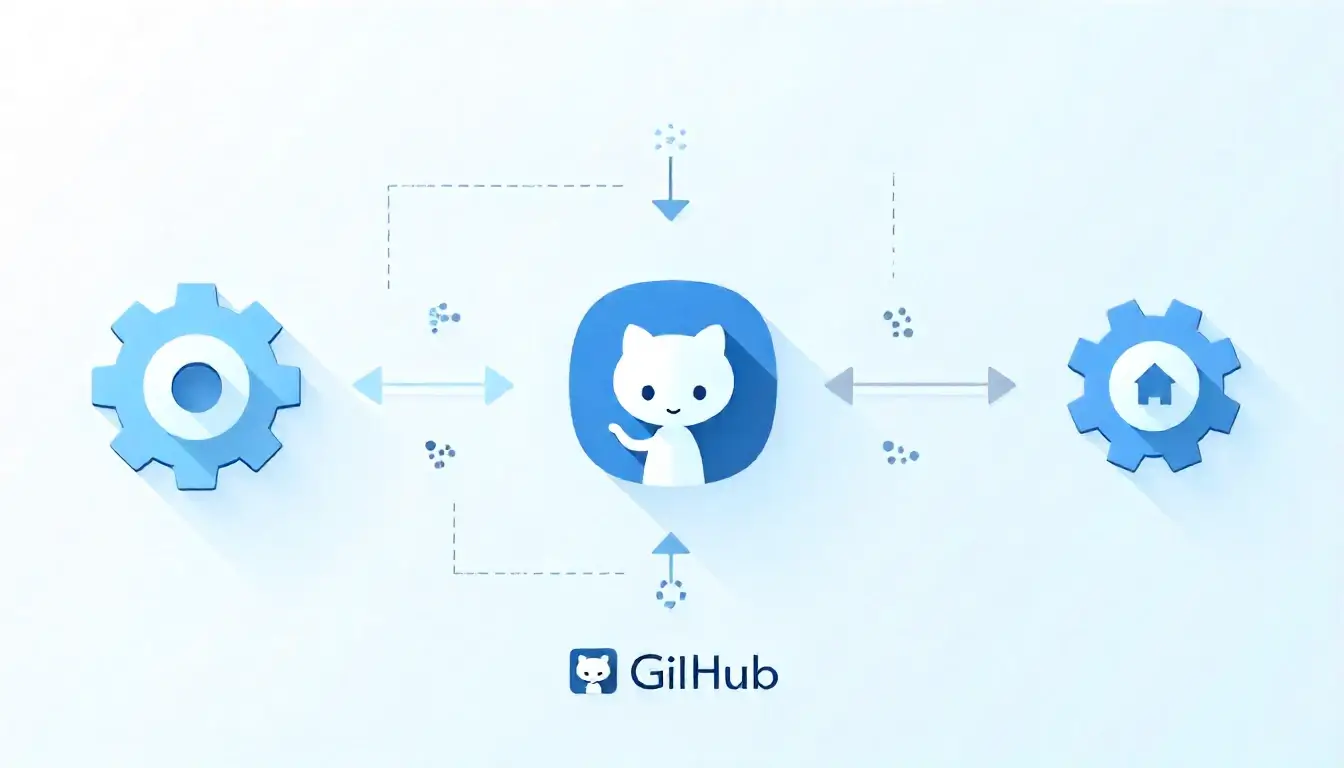This article explains how to automate website updates using GitHub Actions, especially for projects hosted with git hosting platforms such as GitHub Pages. You will learn how to automatically rebuild, test, deploy, and update your site whenever changes are pushed to the repository. This guide is written to be easy to follow, even if you are new to continuous integration workflows.
Introduction
When hosting a site using GitHub Pages or any git hosting platform, updating your site manually can become time-consuming. Every time you make a change, you have to commit, build, and deploy. As your project grows, repeating these steps manually increases the chance of errors and slows down your workflow.
GitHub Actions allows you to automate these processes. With GitHub Actions, you can trigger automated workflows when you push code, open pull requests, or schedule updates. These workflows can run tasks such as building static websites, optimizing assets, running tests, or deploying changes automatically.
This means your website will always stay up to date with minimal manual intervention.
Why Automate Site Updates?
Automation is important for several reasons:
- Time Efficiency: You no longer need to deploy manually after every change.
- Consistency: Automated builds help prevent errors and ensure correct results each time.
- Scalability: As your project grows, automation helps maintain workflow efficiency.
- Professional Development Workflow: Automation reflects best practices used by modern development teams.
If your website relies on a static site generator such as Jekyll, Hugo, or Docusaurus, GitHub Actions makes it possible to build and deploy your site seamlessly using the same repository.
Understanding GitHub Actions
GitHub Actions is a CI/CD (Continuous Integration/Continuous Deployment) service built into GitHub. It enables automated workflows that are defined in YAML configuration files stored inside a .github/workflows/ folder in your repository.
A workflow stands on three key components:
- Triggers: Conditions that start the workflow, such as a push to the main branch.
- Jobs: Work executed during the workflow.
- Steps: Specific commands carried out in each job.
Setting Up GitHub Pages for Your Site
Before setting up automation workflows, make sure your website is hosted properly. GitHub Pages supports both user and project sites.
To host your site using GitHub Pages:
- Create or push your site files to a GitHub repository.
- Go to Settings → Pages in your repository.
- Select the branch to publish from (commonly
mainorgh-pages). - Save and wait for GitHub to publish your site.
Once your site is live, you are ready to automate updates.
Creating Your First GitHub Actions Workflow
To automate site updates, we need to create a workflow file.
Follow these steps:
- In your repository, create a folder:
.github/workflows/ - Inside that folder, create a file named
deploy.yml
Add the following example configuration:
name: Build and Deploy Site
on:
push:
branches: [ "main" ]
jobs:
build-deploy:
runs-on: ubuntu-latest
steps:
- name: Checkout Repository
uses: actions/checkout@v3
- name: Set up Ruby for Jekyll
uses: ruby/setup-ruby@v1
with:
ruby-version: 3.1
- name: Install Dependencies
run: bundle install
- name: Build Site
run: bundle exec jekyll build -d ./build
- name: Deploy to GitHub Pages
uses: peaceiris/actions-gh-pages@v3
with:
github_token: $
publish_dir: ./build
This workflow:
- Runs whenever a commit is pushed to
main. - Builds your Jekyll site.
- Deploys it to GitHub Pages.
Automating Updates for Static Site Generators
Different static site generators require slightly different configurations.
Example for Hugo
- name: Install Hugo
uses: peaceiris/actions-hugo@v2
with:
hugo-version: '0.110.0'
- name: Build
run: hugo --minify
Example for Docusaurus
- name: Install Dependencies
run: npm install
- name: Build
run: npm run build
Scheduling Automatic Updates
You can use cron scheduling to update your website automatically.
on:
schedule:
- cron: "0 6 * * *"
This triggers the workflow every day at 6 AM UTC.
Using Git Hosting for Team Collaboration
If your project is maintained by multiple contributors, automation makes updates smoother.
Team members do not need to know deployment steps. They only push updates, and the workflow handles the rest.
This strengthens version control usage and keeps your git hosting repository clean and consistent.
Workflow Security Considerations
To keep your workflows secure:
- Never store sensitive tokens in workflow files.
- Use GitHub Secrets instead (
Settings → Secrets → Actions). - Limit workflow permissions when possible.
Testing Before Deployment
You can add test steps before deployment:
- name: Run Tests
run: bundle exec rspec
This ensures only valid builds get deployed.
Troubleshooting Common Errors
| Issue | Solution |
|---|---|
| Build fails due to missing dependencies | Verify Gemfile or package.json is complete |
| Page does not update after workflow | Confirm publishing branch settings |
| Permission errors | Ensure correct token permissions in secrets |
Final Checklist
- Your
.github/workflows/folder includes a deployment workflow. - Your GitHub Pages publishing branch is correctly configured.
- Your site builds successfully locally before automation.
Conclusion
Using GitHub Actions to automate site updates saves time, reduces deployment issues, and ensures consistent results. Whether your site uses Jekyll, Hugo, Docusaurus, or plain HTML, automation transforms your workflow into a reliable, professional development environment.
By leveraging automation effectively, your git hosting setup becomes more efficient, scalable, and easy to maintain.
Your website stays up-to-date automatically, allowing you to focus on creating new content and improving your project rather than performing repetitive deployment tasks.
 Coding Rhodes
Coding Rhodes 
 Enhancing User Experience on Your GitHub-Hosted Site
Enhancing User Experience on Your GitHub-Hosted Site